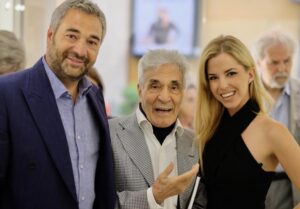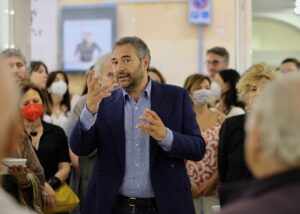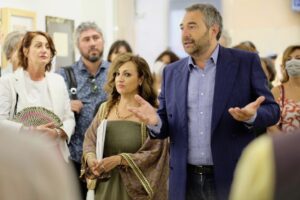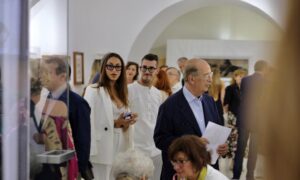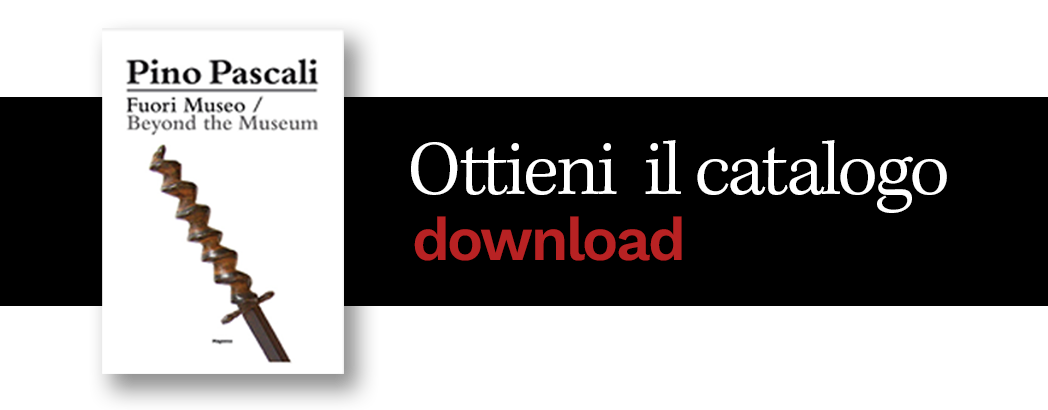
Fabio Falsaperla’s Galleria La Nuvola opens its second exhibition space in Rome under the direction of his daughter Alice, with an exhibition by Pino Pascali, one of the most representative artists of the Piazza del Popolo School, an artistic group that Falsaperla was responsible for to promote his business right from the start, becoming, over time, the gallery owner of reference. After the solo shows dedicated to Tano Festa, Mario Schifano, Franco Angeli, Mario Ceroli, Renato Mambor, Cesare Tacchi, Gino Marotta, Giosetta Fioroni and Sergio Lombardo, that of Pino Pascali could not be missing, already present, to tell the truth, in some collective exhibitions presented in recent years in the Gallery.
The exhibition features around thirty works created by the artist of Apulian origins between 1960 and 1966, a very important moment for his training, when, having finished his studies at the Academy under the guidance of Toti Scialoja, he began to work as assistant set designer at Rai and to collaborate as an advertising set designer, first with Incom and then with Saraceni-Lodolo (advertising Algida). The working and friendship relationship with Sandro Lodolo continued until his death. In 1963 he created the theme song Tic Tac for the Sutter company and in 1966 that for Cirio, for which he acted and directed. Finally, in the same year, he collaborates with Maggiora Biscotti, of which he writes the story, designs the sets and the puppets he animates. On display there are some drawings created for the first Algida advertising campaign (Killer series) which were however rejected by the client because they were too innovative for the time.
As is known, starting from 1964, Pascali will make a turning point in his research, which from two-dimensional will transform into object-based, and consequently three-dimensional, to then become, in the last years of his short but intense life, between 1966 and 1968, an installation / environmental. To the pop period, between 1964-65, identifiable with the production of the Red Lips or the Maternity, or even the Torso di una negra, protruding from the support of the canvas (the influence exerted by Burri dei Gobbi but also by the contemporary Tappezzerie di Tacchi), followed, the following year, by that of the War Weapons faithfully reconstructed by the artist by reusing recovered waste objects; subsequently came those made with “poor” materials such as earth, puddles of water or those with curtained canvases having animals as subjects (dinosaur, bucranium, whale).
The exhibition documents very well both Pascali’s extraordinary inventiveness and his impressive ease in experimenting with new techniques, in the wake of the teachings received from Scialoja at the Academy, but the exhibition has above all the merit of framing the figure of the artist in the correct way, demonstrating how most of the iconographic themes developed by Pascali after 1964-65 were already present in the two-dimensional works created between the end of the 1950s and the early 1960s. Here then are the drawings focused on the theme of war with missiles or anti-aircraft guns, executed in 1964 and transformed into the object version in 1966; here is the world of animals drawn on paper, in which dinosaurs, dogfish and whales appear which Pascali made three-dimensional between 1966 and 1968; or even the African world of which he represented in 1964, in graphic form, images of totemic figures, sorcerers, shields, and which in 1968 became “real” suspension bridges, traps, spears, bows and other various objects belonging to the primitive world.
A universe, that of Pascali, in which imagination has always played a leading role. One day, a journalist asked him if being a sculptor was a tiring job. Pascali replied like this: «I don’t think that a sculptor does tiring work: he plays, even the painter plays; like all those who do what they want. Play is not just for children. Everything is a game, don’t you agree?”. Well, I believe that today, as then, Pascali’s works have the ability to make us children again, showing us the world through the lens of play. A serious game, of course, exactly like when children play war.
Alberto Dambruoso
Photography by Domenico Flora
